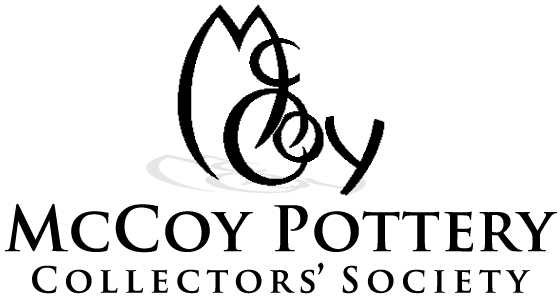By Craig Nissen
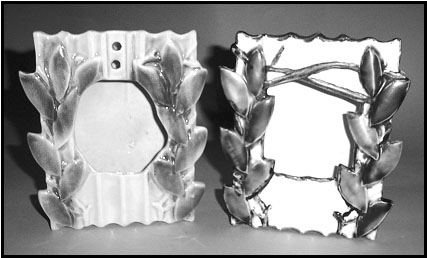
Whether you are a McCoy Pottery Lamp collector or a McCoy Pottery Wall Pocket collector, this might be another piece to put on your wish list! This wonderful Wall Lamp/Wall Pocket was almost assuredly a McCoy product made for Buckingham Ceramics, and is but another wonderful piece for all collectors to keep in mind as you hunt for the Nelson McCoy Pottery we all love.
Pictured to the left is the Wall Lamp next to a McCoy Wall Pocket from the late 1940’s, that was prototyped, but never produced.
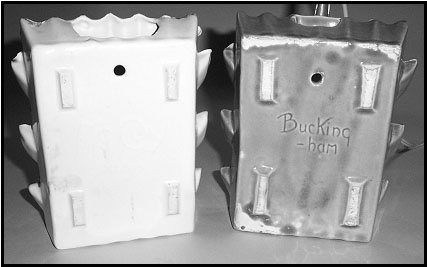
You can easily see the similarity in the design of both pieces. The size of the pottery shape is about 7 inches tall and 6 inches wide for both pieces. The two holes in the front of the Wall Lamp, toward the top, are for the mounting of a metal bracket to hold the bulb socket and also provide a channel shape for the lamp wire to lie in.
The second photo compares the back of two pieces. Note the same design and location of the kiln resting pads as well as the design from the back of the leaf extensions from the main bodies.
Although it’s hard to make out the McCoy Mark that is on the wall pocket in the photo, the Buckingham mark and the McCoy mark are located in the same area. (If you have a copy of the McCoy Book on McCoy Wall Pockets, you can view the back of this Wall Pocket on page 65, showing the McCoy mark.) So let’s further examine why this is likely a McCoy product. What we know as fact is that McCoy made pieces for the Buckingham Ceramics Company. Nelson McCoy was kind enough to share some of the history related to that relationship. Buckingham, gave McCoy about six pieces a year to produce for them. He also noted that Buckingham also gave Brush Pottery about the same number of pieces each year. However, there was no competitive bidding that occurred. Both companies were simply expected to quote the six products given to them at a fair price and simply proceed with production.
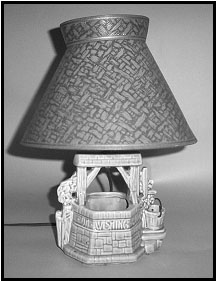
One of these items was a lamp utilizing the design of the very successful McCoy Wishing Well planter. Many collectors have found examples of this lamp in several McCoy known glaze colors. An example of this Wishing Well Lamp is shown in the photo to the left.
It has the typical McCoy gloss gray glaze, consistent with this late 1940s era and is marked Buckingham on the bottom in the same style as that shown on the back of the Wall Lamp. The other interesting point of this photo, for collectors, is the shade on this particular Wishing Well Lamp example. This shade is consistent with the design of lamps in this era. The material is consistent with the era, the shade material is also similar to shades found on other known McCoy made lamps from this era and finally, it “fits” the lamp, meaning the size relationship of the shade to the base is correct and the bottom of the shade cuts across just below the socket, to hide that hardware but not any lower.
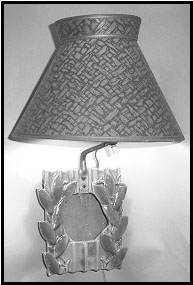
The result is that it is very likely that this was the shade sold originally with this Wishing Well Lamp.
Why are we making such a point of this shade when the article is about the Wall Lamp? Well, the photo to the right shows that same shade on a Wall Lamp example.
Again, note how well it “fits” the Wall Lamp. It is further believed that Buckingham likely sold this same shade with this Wall Lamp. This practice was very typical of other known lamp producers of the era; sharing shade products on small table lamps with wall lamp designs.
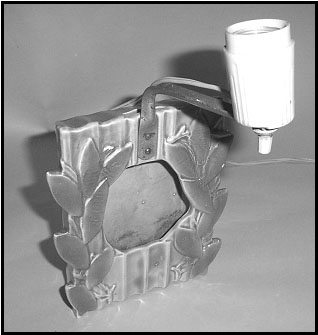
But, that is not where the facts supporting this Wall Lamp as a Nelson McCoy product ends; even though one could argue we already have enough evidence! To date, the few examples found of this wonderful Wall Lamp, are in but two glaze color combinations. The first is the exact same gloss gray glaze with burgundy glaze accent on the leaves as is found on the McCoy Mermaid Lamp with those same colors.
The second glaze color combination found is a gloss yellow glaze with rusty brown glaze accent on the leaves. These are the same glazes as those found on the yellow glaze color version of the Flower with Bird McCoy wall pocket. Of course, all of these glazes were in the McCoy factory in the same range of years; the late 1940s to very early 1950s, which just adds to the validity of all these conclusions.
The final photo above is a shot of the Wall Lamp, providing an additional look at how the metal bracket with socket looks as mounted to the pottery portion of the Wall Lamp. You can see the channel shape in the bracket, as noted above, to provide a place for the wire to run from the socket to the back of the Lamp.
I hope you have enjoyed the sharing of this new discovery of a product made by the Nelson McCoy Pottery Company and that just maybe, you will come across one of these treasures in your own hunting for McCoy! Good Luck!
